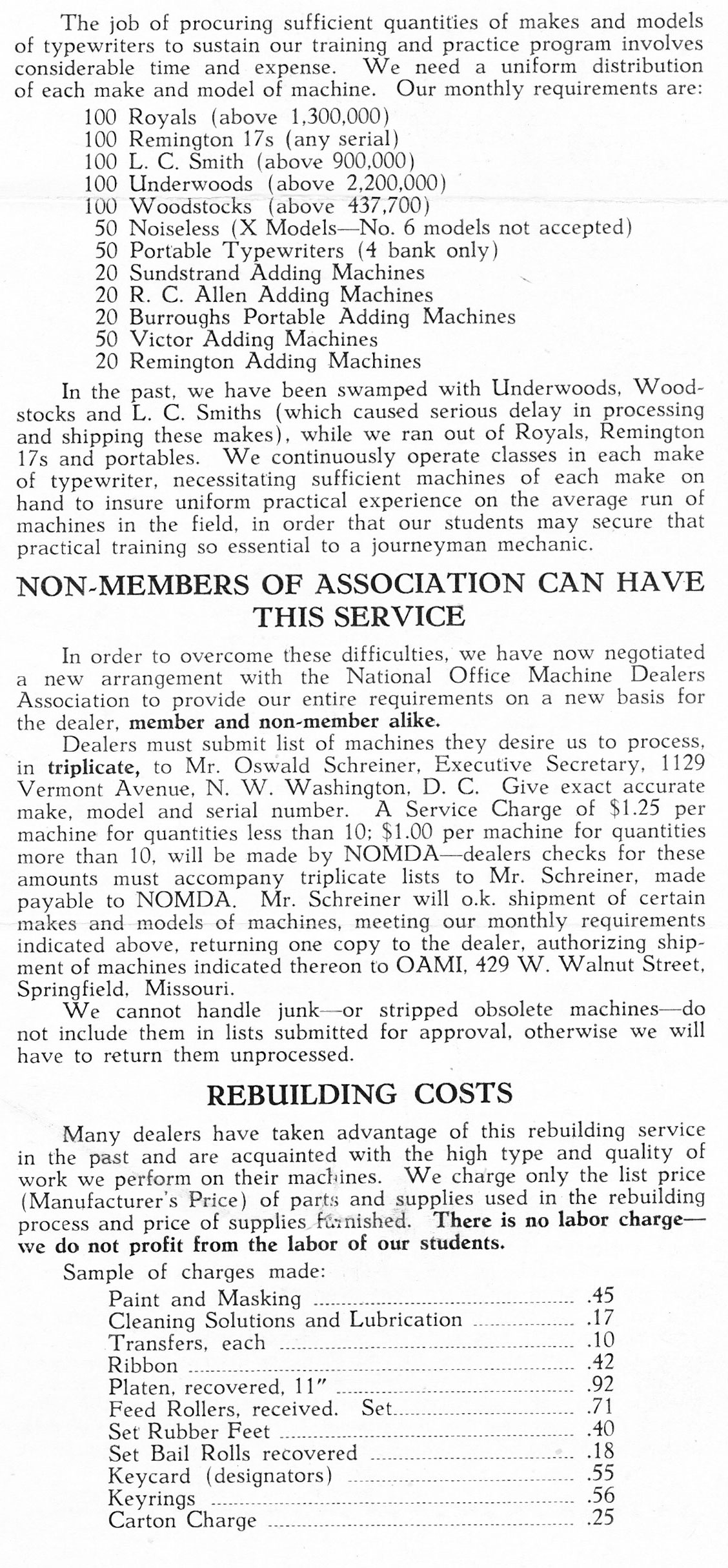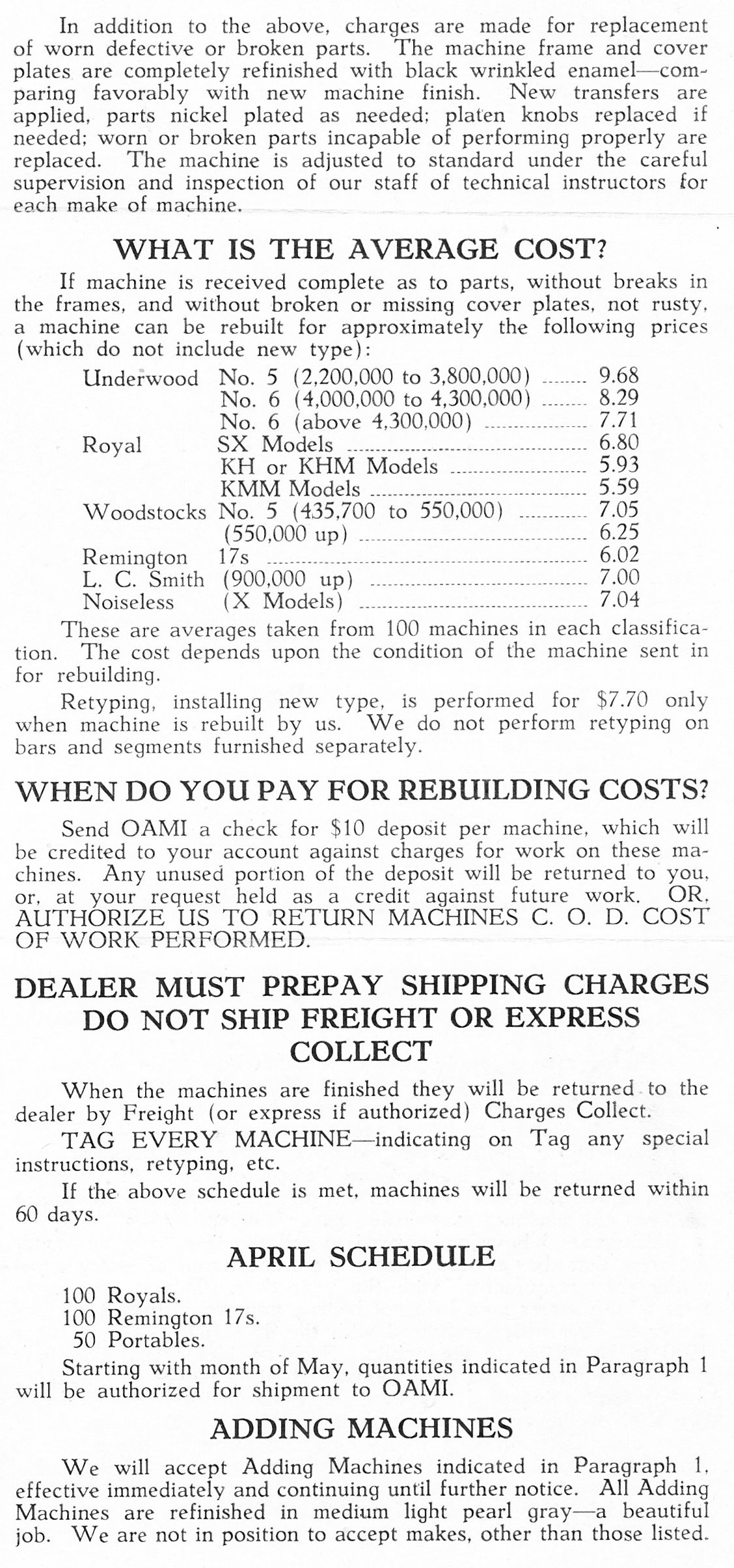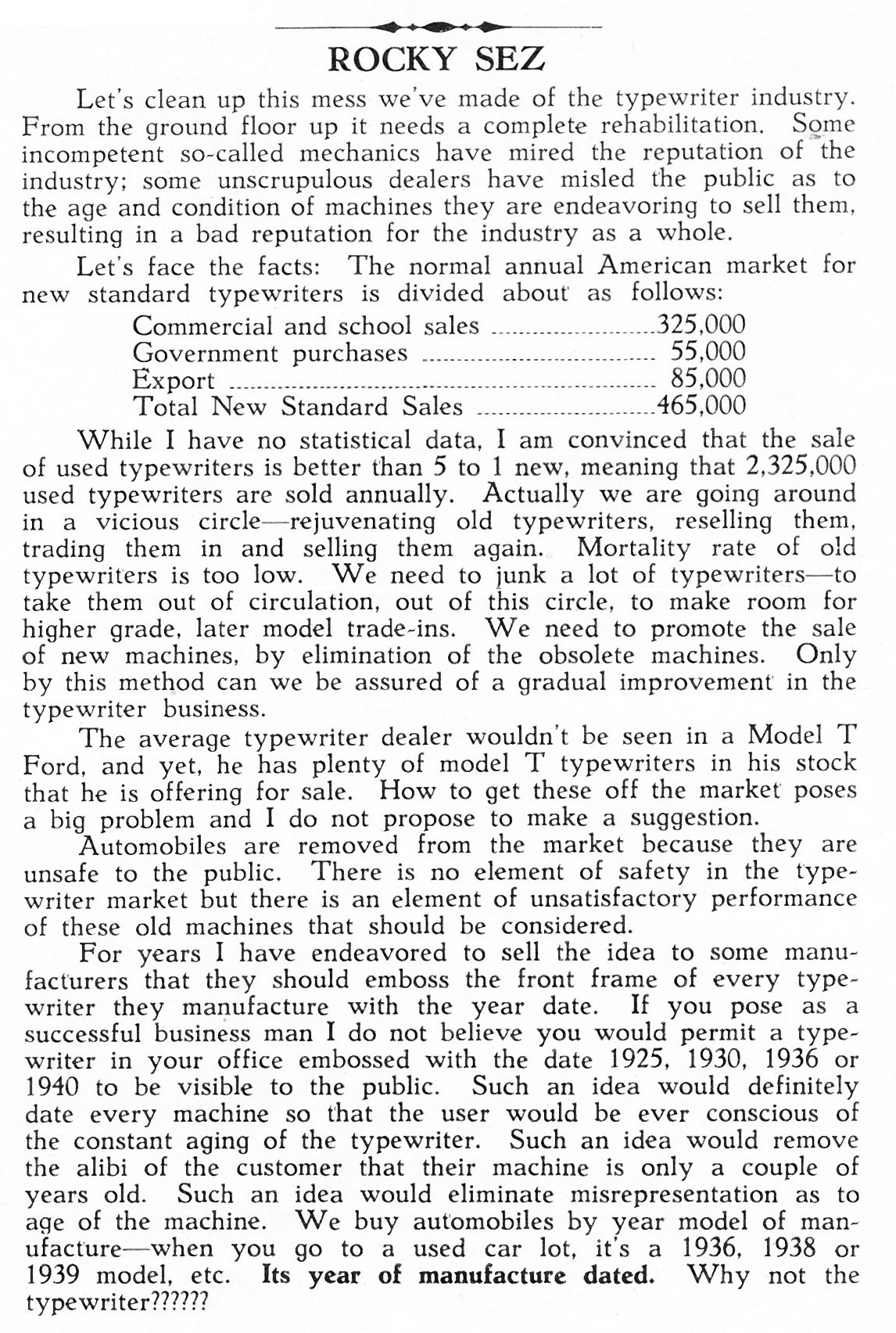Just months after the founding of the OAMI, the newsletter announced the parameters of the training school’s need for machines on which to train the students. The machines accepted for the program were rebuilt at the cost of materials and returned to the dealers who resold them. There was a hard limit to how old a machine they would accept, limiting service training to Underwoods of about 1919 and newer (30 years old, at the time), Royals of 1929 and newer (20 years), Remingtons of 1939 and newer (10 years), LC Smiths of 1929 and newer (20 years), and generally limiting brands to ranges of no more than 30 years old and usually much less. This heavily incentivized dealers to junk older machines taken as trade-in, as they couldn’t take advantage of this NOMDA-Affiliated program to get cheap like-new refurbs to sell.
And rebuilts were a *HUGE* market. Rocky pulls a “5 Times the number of refurbs sold each year than new” number straight outta his hinder, but we can surely imagine that he has his finger on the pulse on the market enough to have a pretty good idea of the scale. Personally, it’s hard to see that sort of scale in people’s collections today unless there are a lot more rebuilts than is generally understood just by visual inspection, but I see enough steady selling of rebuilts in Dealer publications and even department store catalogs well into the 60’s to believe that it was a pretty huge market.
So the incentives were high in real commercial terms to junk antique machines. Then Rocky comes out with a “Rocky Sez” straight-up preaching the need to “Promote the sale of new machines, by ELIMINATION of the obsolete machines.” He even advocates for date plates stamped right on the front frame to remind consumers how old their typewriters were. He desires to see typewriters in the used market to be sold with manufacture date attached just like in the used car market. I wonder if Rocky would have enjoyed the fact that this is how they *are* generally sold *today*? :D
From the collection of Kirk at Nashville Typewriter, excerpts of the March 15, 1949 – Vol I, No. 5 issue of Rocky’s OAMI Newsletter!




Wow, typewriters are the perfect example of how a circular economy would look like: products designed to last forever and when broken down, easily repairable. Not like mobile phones or other electronic equipment nowadays. It is sad to see that already in 1949 this durability of the typewriter was seen as a problem. I am living in the Netherlands where most of the old American typewriters I find here was rebuild. I have had several Underwood 1 from the turn of the century with dealer stickers of the 1960s. So these were sold by a dealer when they were already 60 year old.
I wonder if those machines were exported here when they were new, or whether they were exported as obsolete machines to Europe after the second world war. We needed typewriters here and in the US you needed to get rid of them. A win win situation that would explain the relative abundance of rebuilts here.
If only everything was made to last like the old manual typewriters. I have an Underwood No.3 that was rebuilt way back when (I can’t find the source or date, only 2 serial numbers) that is like new.
Cell phone or PC with proper care lasts 5 years.
Manual typewriter with proper care lasts Centuries.
“Mortality rate of old typewriters is too low.” — Ah, Rocky, Rocky, you break my heart.
Most informative!